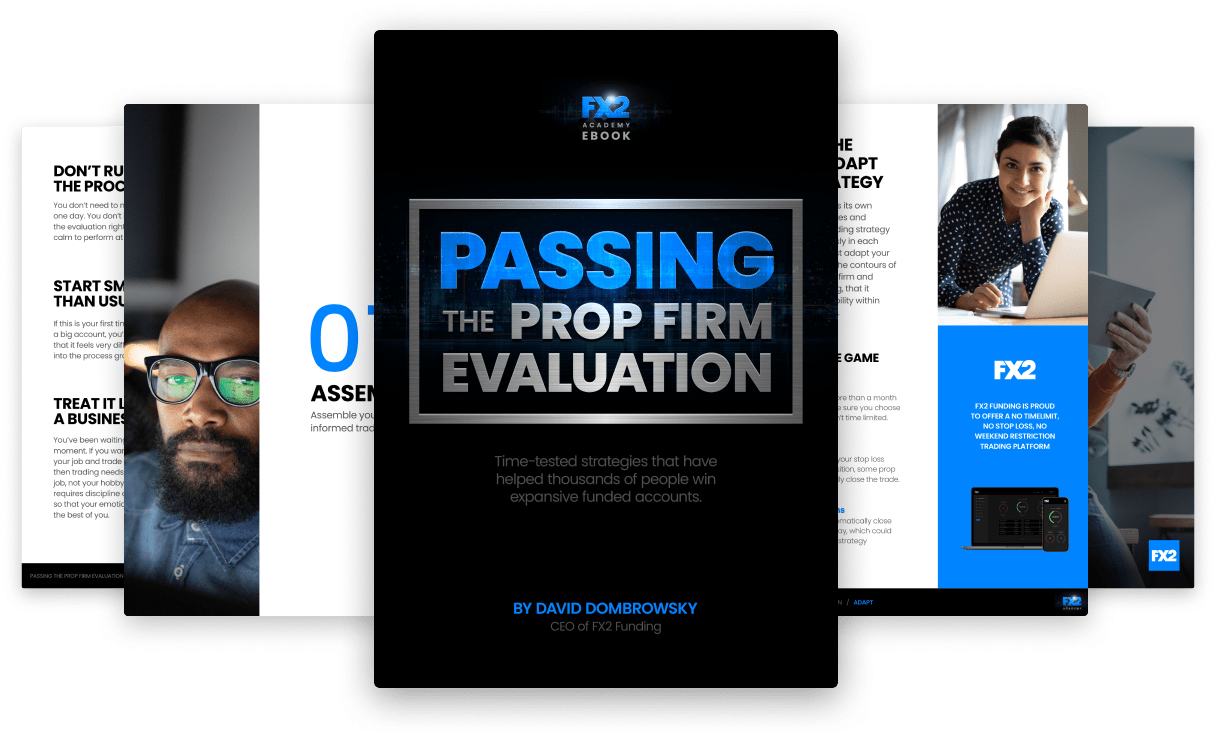Elevate Your Trading Game With These Easy-to-learn Skills
In the dynamic world of trading, success hinges on your ability to interpret and act on market information. This section delves into the foundational skills of research and analysis, equipping you with the tools to make informed trading decisions.
Practical Trading Skills: Research and Analysis
Successful trading is built on a foundation of robust research and sophisticated analysis. Developing a keen understanding of market dynamics through both fundamental and technical analysis is crucial. Here's a deeper look into how these components work:
Market Analysis
Understanding market dynamics is the cornerstone of profitable trading. By mastering both fundamental and technical analysis, you'll gain a comprehensive view of the factors driving market movements, enabling more accurate predictions.
Fundamental Analysis
This involves examining macroeconomic indicators, global economic trends, and financial news that can influence market movements. Traders should focus on understanding how events like central bank announcements, unemployment rates, GDP figures, and political instability can affect markets. Keeping abreast of economic calendars and financial updates can provide traders with insights needed for informed trading decisions.
Technical Analysis
Utilizes various tools and charts to analyze past market data and predict future price movements. Key techniques include:
Chart Patterns
Recognizing patterns like head and shoulders, flags, and triangles can suggest future price movements.
Technical Indicators
Tools such as moving averages, Relative Strength Index (RSI), and MACD (Moving Average Convergence Divergence) help identify trends, momentum, and potential reversal points. Mastery of these tools allows traders to pinpoint entry and exit points, enhancing their trading strategies.
Order Management
Efficient order management maximizes the effectiveness of entering and exiting trades at opportune moments. Understanding and using various order types—like limit orders for targeting precise prices, and stop orders for managing risks—ensures that traders can execute their strategies under different market conditions.
Trading Discipline: Key to Success
Discipline is paramount in trading and revolves around meticulous adherence to a well-defined trading plan and the ability to manage emotions effectively:
Stick to Your Plan
A comprehensive trading plan outlines your financial goals, risk tolerance levels, methodologies, and criteria for entering and exiting trades. Consistently following this plan helps mitigate impulsive decisions influenced by emotions like fear or greed.
Emotional Control & Learning
Maintaining emotional equilibrium is critical, especially in response to profit fluctuations or losses. Effective traders:
Develop Patience
Waiting for the right trading opportunities that align with their strategies, rather than chasing profits.
Maintain Objectivity
Keeping a clear head and making decisions based on systematic analysis rather than emotional reactions.
Embrace Continuous Learning
Regularly updating their knowledge and skills, understanding new tools, and adapting to market changes.
Risk Management in Trading
Effective risk management is critical to securing your investments and ensuring sustainable trading activities. This segment explores essential risk management tools and strategies:
Position Sizing & Stop-Loss
The cornerstone of risk management is determining the correct position size relative to the total trading capital and the risk associated with the trade. The use of stop-loss orders is crucial as they are designed to limit an investor’s loss on a security position. Visit this article for a stop-loss order guide.
Position Sizing
Calculating the right amount to invest in a single trade based on the risk tolerance and the stop-loss level set.
Stop-Loss Implementation
Placing a stop-loss order at a predetermined level that automatically closes a losing trade to prevent further losses. This method is crucial in managing and controlling potential downside without needing to constantly monitor the market.
Diversification & Risk-Reward Ratio
Diversification isn't just a risk management strategy but a prudent approach to trading and investing:
Diversification
Spreading your investments across various financial instruments or asset classes to mitigate risks. This strategy helps reduce the impact of a poor performance of a single asset on the overall portfolio.
Risk-Reward Ratio
Before entering a trade, evaluate the potential reward relative to the risk. A favorable risk-reward ratio, such as 3:1, means expecting three units of profit for every one unit of risk.
Assessing and Identifying Trading Risks
Identifying potential risks involves careful analysis of market conditions and economic indicators. Using tools like volatility indices can provide insights into potential risk levels, helping traders adjust their strategies accordingly.
Adaptation to Market Conditions
Market conditions can significantly impact trading strategies and outcomes, requiring traders to adjust their approaches depending on whether the market is in a bull or bear phase. Understanding bullish and bearish flags and how to navigate these conditions is essential for maintaining profitability and capital preservation.
Bull Markets
In bull markets, where prices are generally on the rise, the sentiment is optimistic, and investors are eager to buy, presenting unique opportunities for traders:
Capitalizing on Long Positions:
During bull markets, many stocks and assets exhibit strong upward momentum, making them ideal candidates for long positions. Traders should focus on:
- Identifying Growth Stocks. Look for companies with strong financial health, innovative products, or services and solid growth potential. Utilizing financial analysis and market forecasts can help pinpoint these opportunities.
- Momentum Trading. This involves buying stocks that have shown upward price trends and selling them when they appear to peak. Technical indicators like moving averages and MACD can help identify these trends.
Using Buy and Hold Strategies:
The buy and hold strategy, a favorite among traditional investors, also works well in bull markets for traders who prefer less frequent trading:
- Portfolio Building. Construct a portfolio with a mix of stocks that are likely to benefit from prolonged market uptrends. Diversification across different sectors can help tap into different sources of gains.
- Long-Term Investments. Instead of short-term gains, focus on stocks or assets that could appreciate over the years. This approach requires less time monitoring daily market fluctuations and can lead to significant compounded gains.
Bear Markets
Bear markets, characterized by generally falling prices, create a more challenging environment for traders. However, they also offer substantial opportunities for those who know how to navigate them:
Engage in Short Selling:
Short selling allows traders to profit from declines in stock prices by borrowing shares to sell at their current price before buying them back at a lower price in the future:
- Identify Overvalued Stocks. Stocks that are overpriced relative to their fundamental value are prime candidates for short selling. Financial ratios, earnings reports, and market sentiment can guide these decisions.
- Technical Analysis. Use technical indicators to determine when a stock may begin its decline. Patterns like head and shoulders, double tops, and increased trading volume can signal a good time to initiate a short position.
Seek Safe Havens:
During downturns, safe-haven assets can protect or enhance a portfolio’s value:
- Gold and Precious Metals. Traditionally, gold and other precious metals retain or increase their value during market turmoil. They are considered a hedge against inflation and currency devaluation.
- U.S. Treasuries and Bonds. Government and high-grade corporate bonds offer lower risk during volatile market conditions. They provide regular interest payments and return the principal upon maturity.
- Defensive Stocks. Companies in sectors like utilities, consumer goods, and healthcare tend to be less affected by economic downturns. Their stocks are often more stable during bear markets.
Consolidation: Navigating Sideways Markets
Sideways or consolidating markets present a unique challenge and opportunity in trading. In these markets, prices experience little to no overall upward or downward movement, often confining within a predictable range. Understanding how to navigate these conditions can open up various strategic avenues for disciplined traders.
Range Trading: Mastering Market Oscillations
Range trading is a strategy particularly well-suited to sideways markets. It involves identifying stocks, currencies, or commodities that are fluctuating within a consistent price range and capitalizing on these predictable oscillations. Here’s how to effectively engage in range trading:
Identifying Support and Resistance Levels
These are the price points where the market consistently stops and reverses. Support is the lower boundary where price tends to find a floor, and resistance is the upper boundary where price seems to hit a ceiling.
Entry and Exit Points
Traders should look to buy or go long at or near the support level and sell or go short near the resistance level. This method relies on the assumption that the price will continue to bounce between these established boundaries.
Using Technical Indicators
Tools like the Relative Strength Index (RSI) or Stochastic Oscillator can help determine when the price is overbought (likely to fall) or oversold (likely to rise), providing additional confirmation for entry and exit points.
Looking for Breakouts: Capitalizing on Potential Shifts
While range trading capitalizes on price stability within a defined range, breakout strategies focus on moments when the price moves beyond these established levels. This could signify a new trend beginning, offering significant profit opportunities:
Anticipating Breakouts
Monitoring volume can be key, as a sudden increase in trading volume can precede a price breakout. Additionally, narrowing price ranges, known as 'squeeze', can often precede breakouts.
Confirming the Trend
Before taking a position, confirm the breakout with additional indicators. A false breakout, where the price briefly surpasses a level only to fall back within the range, can lead to losses.
Adjusting Strategies
After a breakout, the old resistance or support level often reverses roles. A resistance level once broken can become new support, and vice versa, guiding new positions.
Minimizing Psychological Risks in Trading
Beyond mastering technical strategies, successful trading demands significant psychological resilience. The mental and emotional aspects of trading are as crucial as financial acumen, if not more so. Here’s how traders can manage psychological risks:
Emotional Control
The ability to manage emotions like fear, greed, excitement, and frustration is vital. Emotional decisions can lead to irrational trading, such as chasing losses or exiting profitable trades too early.
Maintaining Discipline
This involves sticking to a trading plan and strategy regardless of emotional states. Discipline helps traders avoid impulsive behaviors and ensures consistency in their trading approach.
Decision-Making Based on Rational Analysis
Making trading decisions should always be backed by data and analytical reasoning, not gut feelings or hunches. This involves continuous learning and applying logical analytical methods to every trading decision.
Dealing with Stress
Trading, especially in volatile or unpredictable market conditions, can be stressful. Effective stress management techniques, such as taking breaks, having a clear work-life balance, and practicing mindfulness, can help maintain mental clarity and decision-making capacity.
Bottom Line
Understanding and mastering these trading skills—market analysis, discipline, risk management, and adaptability—are fundamental to achieving and sustaining trading success. By continually refining these skills, traders can enhance their ability to navigate complex market environments and achieve consistent results.
Ready to put your trading skills to the test?
Explore our funded account programs.








